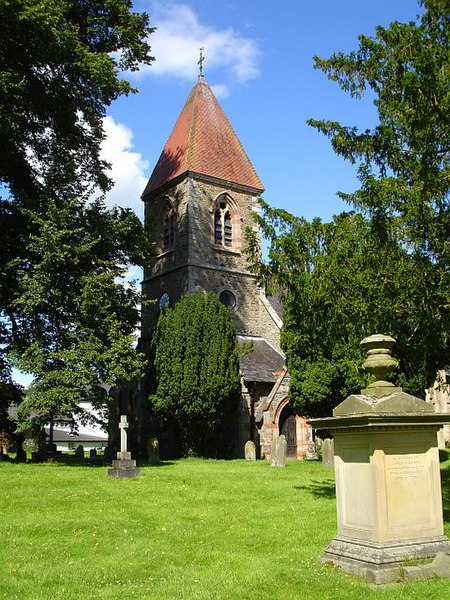St Beuno's Church, Berriew

St Beuno’s Church is the parish church of Berriew, in the historic county of Montgomeryshire, now Powys. The church stands in an almost oval churchyard in the centre of the village. The original church was a single-chamber, with a wooden west bellcote and a northchancel chapel. This church was replaced in 1803-4 with a larger brick church by the architect John Hiram Haycock of Shrewsbury. It was of brick with stone dressings, and had the entry under a pinnacled west tower to a galleried nave with four round-headed windows a side. The church was largely rebuilt by his grandson, Edward Haycock, Junior in 1876. It consists of a nave, aisles, chancel, north porch, and west tower The west tower has the doorway blocked, stone facing for brick, and Gothic windows, except for the circular ones on its second stage.
Excerpt from the Wikipedia article St Beuno's Church, Berriew (License: CC BY-SA 3.0, Authors, Images).St Beuno's Church, Berriew
Church Terrace,
Geographical coordinates (GPS) Address External links Nearby Places Show on map
Geographical coordinates (GPS)
| Latitude | Longitude |
|---|---|
| N 52.599057 ° | E -3.200607 ° |
Address
St Beuno
Church Terrace
SY21 8PF , Berriew
Wales, United Kingdom
Open on Google Maps







